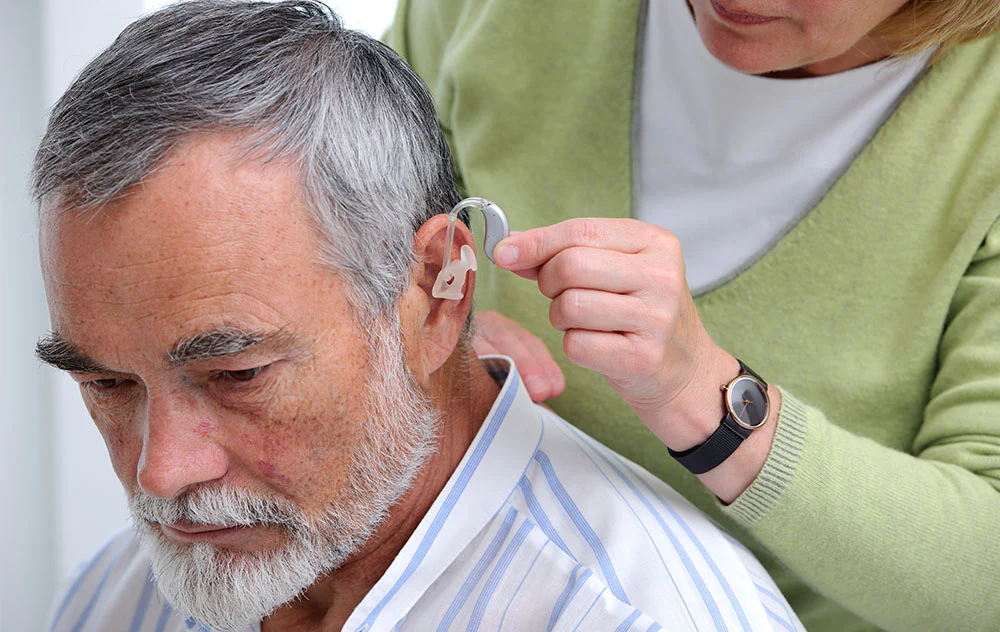RIC hearing aids consist of a small case that sits behind the ear, which contains the electronic components, and a thin wire or tube that connects to a receiver (speaker) placed in the ear canal.

The primary components include the behind-the-ear (BTE) housing, a thin wire or tubing, and the receiver that sits in the ear canal. The receiver delivers sound directly into the ear.
Cosmetically Appealing: RIC hearing aids are less visible compared to traditional BTE styles because the receiver is placed in the ear canal.
Improved Sound Quality:The placement of the receiver in the ear canal allows for a more natural sound experience, as the sound has a shorter distance to travel.
Comfortable Fit:The design provides a comfortable and open fit, reducing the feeling of occlusion in the ear canal.
RIC hearing aids can include various features, such as directional microphones, telecoil (for use with hearing loop systems), wireless connectivity, and advanced signal processing.
RIC hearing aids are suitable for a range of hearing losses, including mild to severe. They are versatile and can accommodate different hearing needs.
Modern RIC hearing aids often feature wireless connectivity, allowing users to connect to smartphones, TVs, and other audio devices for a more integrated listening experience.
Regular cleaning and maintenance are essential, including changing batteries (if applicable), cleaning the tubing, and monitoring for earwax buildup.